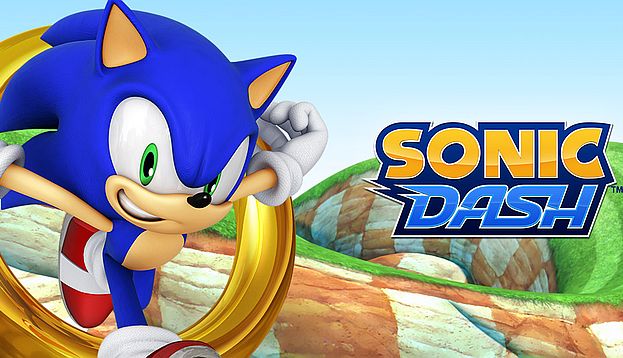The rapid rise of mobile gaming has not merely been the province of new companies — some industry stalwarts have been making major moves on mobile, and Sega is one of those. The company is best known for its long competition with Nintendo in the console space (with consoles like the Genesis, GameGear and Dreamcast), but more recently Sega’s been racing ahead in mobile games. The company announced that Sonic Dash hit an astounding 100 million downloads this June, and that’s not the only title the company has charging ahead on mobile.
Sega’s hit mobile games in Japan include Chain Chronicle, Puyopuyo! Quest, and new titles like Hortensia Saga and Monster Gear. These titles command big numbers in Japan, and Sega is bringing them to the West along with creating more titles New releases like Virtua Tennis Challenge and Football Manager 2015 are doing well, and Sega’s got more mobile games in the works.
Getting to 100 million downloads requires significant efforts in user acquisition (UA), and Sega’s senior UA manager Spiros Christakopoulos spoke with [a]listdaily about Sega’s user acquisition and what techniques are aiding the company’s success.
 Spiros Christakopoulos
Spiros Christakopoulos
How has user acquisition for mobile games changed over the past couple of years, and how do you expect it to change going forward?
Mobile UA has become much more sophisticated, UA managers now evaluate their spending based on hard metrics and use tracking to follow acquired users through the acquisition funnel and into their in-game behavior. We’re also seeing optimization on every step of the user experience from the targeting and the UA creative asset to the store and the on-boarding experience. I expect things to become even more optimized and the bar for the quality and expectations from UA to be raised as brand managers start spending more money.
You deal with brands that have a huge audience, like Sonic, as well as new IP with no existing audience. How is your user acquisition strategy different when you have a successful brand to build on?
From a UA perspective working with an IP definitely has its advantages. The end goal still remains the same though — a firm focus on ROI and longterm profitability. With Sonic we target our efforts on activating the massive fan base, leveraging social initiatives and App Store optimization (ASO). With new IPs it’s a different challenge — you have to start from scratch, first confirming your positioning and targeting choices are correct. Then optimizing the creative funnel so it drives cost efficient action from the target audience.
How is user acquisition different between iOS and Android, or is it pretty much the same?
The overall strategy has converged, however there are tools and acquisition channels that are platform specific and therefore on a tactical level things can be different. ASO is where the biggest differences still exist and necessitates a different approach. We’re excited to have seen that recently both Apple and Google introduce tools that allow us to optimize the storefront and we are looking forward to what they will be doing in the future.
What geographic differences are you seeing in user acquisition — what strategies work best in different regions?
There are large differences in the monetization profile of users from different countries and even from territories in the large countries, like the US. We tend to focus on those countries that have the best monetization profile since they have the potential for a better ROI. We have a good sense of the potential cost-per-installs (CPIs) for each of our games in each country and looking at the monetization of organic users by country we can make intelligent targeting decisions.
While getting users to download a game is important, retention is critical to generating revenue from the game. How do you acquire users that are more likely to stick with a game for the long haul, and how does that vary with different games?
The main metrics we use to evaluate the performance of UA is Day 1 Retention, Day 7 average revenue per user (ARPU) and of course CPI against an LTV estimate. We aim to maximize organic install volume via ASO, a strategy we have seen great results with the past year, while we focus on maximizing ROI on the paid side regardless volume. Correct messaging and targeting is the best way to get the right users for each game. The differences between an interest targeted campaign and broad campaign can be huge. For the ad partners that allow targeting we will gladly use it, we follow a reactive approach based on publisher level performance evaluation.

